Review of Soviet Personal Computers
PK-01 LVIV

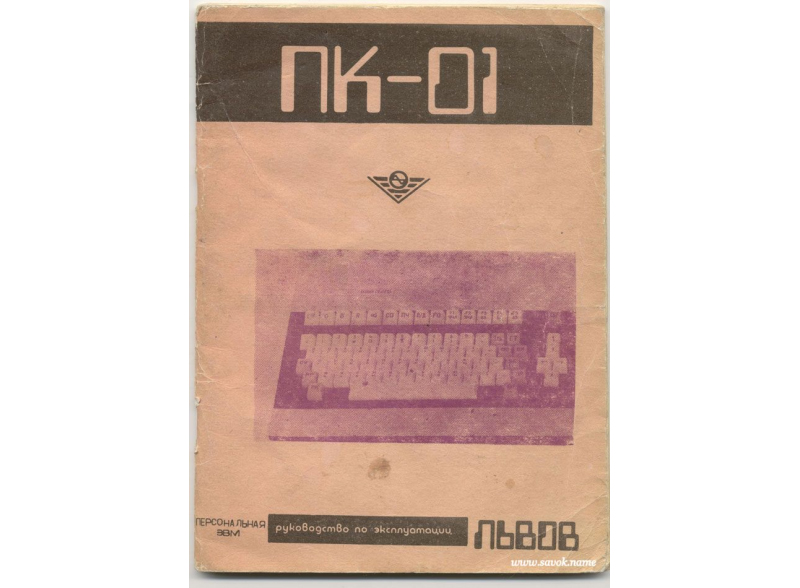
Operating manual "LVIV"
- -Processor: КР580ВМ80А
- -Activity: 500 thousand opt./sec
- -Memory: RAM - 48 KB, ROM - 16 KB
- -In the ROM interpreter BASIC
- -Display symbol-graphic on the basis of a household color TV, the number of characters displayed on the screen is 32? 24, points 256? 256, the number of colors of the image is 4. The amount of video memory is 16 KB.
- -External memory: household cassette tape recorder
- -Keyboard: 79 keys
- -Power Consumption: 35W
Note that the amount of memory was then calculated not by megabytes, but by kilobytes! And these kilobytes were enough, at that time, for almost everything.
Microsha
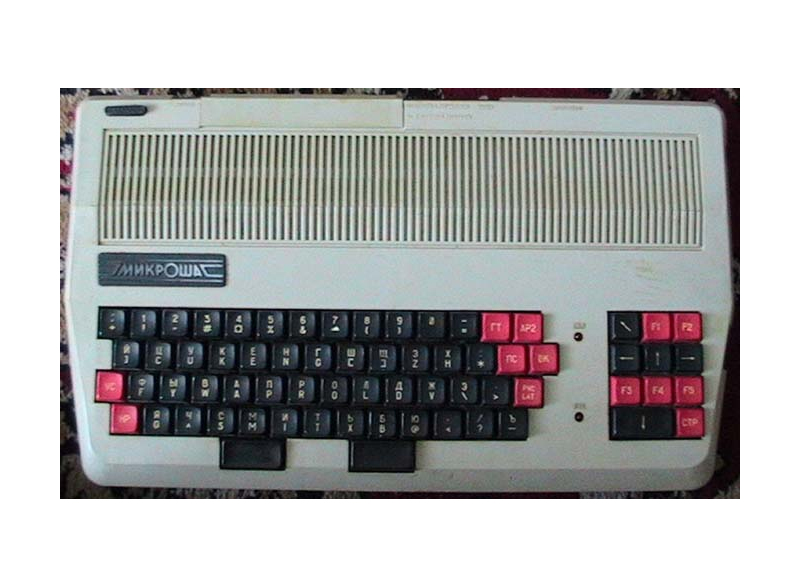
It was slightly weaker than the "Lions", but it had one very big advantage, complete with "Microsha" supplied adapter for connecting the PC to any TV through the antenna input.
At that time, even the black and white monitor was deficit.
When I bought my first black and white monitor, I had to stand in line 2 (!) Of the day.
Screenshots of games from Microsha

Instruction manual "Microshi"
- -Microprocessor: KR580VM80A at a clock speed of 1.77 MHz, speed - 300 thousand op / s
- -Memory: RAM - 32 KB, ROM - 2 KB
- - Output device: Antenna input through the modulator unit (supplied)
- -Mode display: monochrome, 25 lines of 64 characters, the character generator contains symbols of pseudo graphics, which allows you to simulate a graphic mode 128? 50 points
- -Keyboard: 68 keys
- * External memory: home cassette recorder, read / write speed - 1200 bit / s
- * Ports: "Interface 1", "Interface 2", "Internal Interface"
- * Power supply: external power supply 220V (in the school version - 42V), at the output - + 5V,? 5V, + 12V, power consumption - no more than 20W
- * Dimensions: of the system unit - 390? 230? 55 mm, power supply - 160? 100 ? 100 mm, modulator - 100? thirty ? 40 mm
BC

BK is a family of Soviet 16-bit home and educational computers.
It was produced serially from January 1985. In 1990, the retail price for BK 0010-01 in the chain of company stores "Electronics" was 650 rubles, which was 2-3 times higher than the engineer's salary.
The display used a household black-and-white or color TV, or, more rarely, a special monitor, an external cassette tape recorder served as an external memory.
Under the brand "BK" models were produced: 1.1 BK-0010; BK-0010.01; BK-0010SH and BK-0010.01SH; 1.4 BK-0011; BK-0011M
BK-0010
- -Processor: K1801VM1 with a clock frequency of 3 MHz -Operational memory: 32 KB, of which 16 KB is reserved for programs and data, and another 16 KB for video memory -Keyboard: film, 92 keys; Controller K1801VP1-014 -Video: text mode, black and white 512? 256 points, 4-color 256? 256 points; Controller K1801VP1-037 -Language programming language - Focal interpreter in ROM--The power supply for interference protection was placed in a separate housing. -Standard storage device was a cassette tape recorder with the function of controlling the tape drive mechanism, or without it. A parallel 16-bit programmable I / O allows you to connect the printer and other peripherals
Printers for the BC existed, but the sale was seldom received and was a large deficit.
BC-0011- Appeared in 1990. Differences from BK-0010:
- - a large amount of RAM - 128 KB, page organization of memory, two pages of memory could be alternately displayed on the screen, which provided an instant redrawing of the screen - the processor began to work at a frequency of 4 MHz - the screen palettes appeared - the controller of the drive was included in the standard delivery
Agate
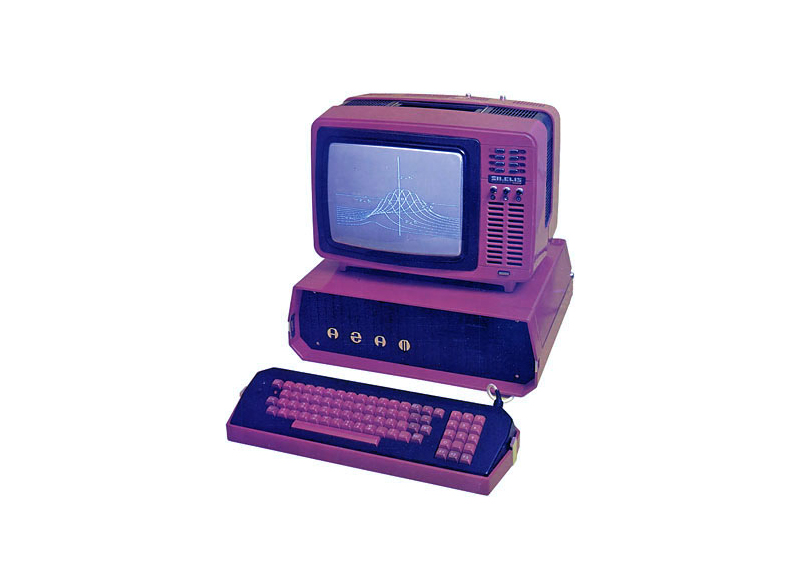
Agat is the first Soviet serial universal 8-bit personal computer, it was developed in 1981-1983. It was produced from 1984 to 1990. Lianozovo electromechanical plant (as well as the Volga and Zagorsk plants).
- -Processor: 8-bit CM630P, worked at a clock frequency of 1 MHz, the claimed performance - 500 thousand op / s, the address space - 64 kb. -Memory: RAM - technical minimum - 32 kb (Agate-7 without additional memory modules), 96 kb (Agate-7 with two additional memory modules) - standard package, 128 kb (Agate-9 without additional memory modules) - standard equipment , 256 kb (Agate-9 with the module of additional memory). Modular architecture of the computer allowed to increase memory by installing additional modules to almost a megabyte. -Keyboard: 74 keys (original from the computer "Agate", later in the kit went the keyboard MS-7004) -Monitor: MC6105 (monochrome), "Electronics 32VTTs 101/201/202" (color), monitor based on the TV "Yunost- 404 "(color). -External storage device: NGDM EC-5088 (140 Kb), EU-5323 (840 Kb); NML (household cassette tape recorder) -Head of the system unit: 500? 351? 195 mm -Mass of the system unit: 9 kg
Corvette

Corvette is a 8-bit personal computer. It was developed by the staff of the Institute of Nuclear Physics of Moscow State University. It was produced serially from 1988 at the Baku Production Association "Radio Engineering", at the Moscow Experimental Computer Center ELEKS GKVTI and in the co-operative ENLIN, at the Kamensk-Urals PO "Oktyabr"
Initially, the computer was intended to automate the control of the installation by remote measurement of the parameters of low-temperature plasma by laser spectroscopy methods, as well as to process the received information and theoretical calculations, maintain the archive of data and a number of other needs. The development was started in late 1985.
PC "Corvette" was adopted by the Ministry of Education of the USSR as a basic for teaching computer science at school. On the basis of the PC "Corvette", a complex of educational computer facilities (KUVT) was produced, which included the workplace of the teacher (PC8020, equipped with NGDD) and up to 15 student workplaces (PC8010) connected to the local network. However, the mass production of PCs was fraught with a number of difficulties, which made the computer "late" and did not receive the expected wide distribution.
- -Processor: KR580VM80A at a clock frequency of 2.5 MHz, the speed of 625 thousand op./s. -Memory: RAM - 64 KB, ROM - 8-24 KB, GZU - 48 (3 layers of 16k) x 1 page / 192 (3 layers x by 16k) x 4 pages, ATSU - 1 KB (16x64) - Output device: monitor or TV, text mode 16 lines of 64 characters, graphics mode 512? 256, 16 colors (text and graphics - displayed in parallel) - Sound generator -Keyboard: 80 keys -External interfaces: Centronics parallel port for printer connection (usually - Epson FX800); Serial port - RS-232C and "current loop", it is possible to connect the mouse, up to two analog joysticks, connection to the local network; Connector for connecting external modules; Connector for diagnostic equipment - External memory: household cassette tape recorder (2400 bit / s)
Computers "Corvette" could be combined into a local network, up to 16 machines in the network.
ZX Spectrum
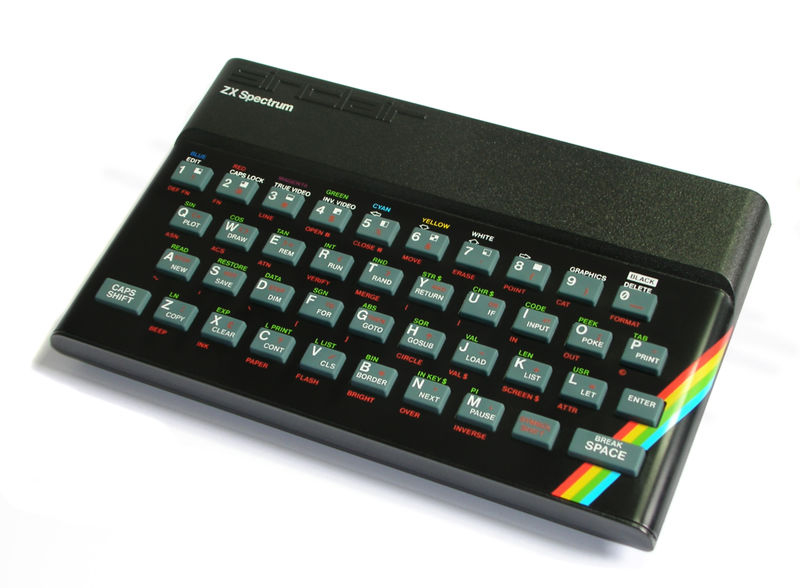
The first ZX Spectrum appeared in the USSR in the late 1980s and quickly gained popularity due to color, musical possibilities and, most importantly, the abundance of games. They entered the USSR, most likely from Poland, at least the first games and documentation came with notes in Polish.
Games for ZX Spectrum

Standard ZX Spectrum 48 had 16 KB of ROM (subsequent models and clones could have more), which was stitched very successful (for computers of this class) "Oxford" dialect of the BASIC language, the so-called Sinclair BASIC. The same ROM program provided basic I / O and a user interface. BIOS as such was not, system procedures (for example, printing on the screen) could be used from the machine code, only by calling them at absolute addresses. In connection with this, the architects of the computer adopted a policy not to change the program ROM, even with the purpose of correcting errors (of which there were many). In addition, the case was complicated by the fact that the code ROM was developed by a third-party company Nine Tiles Ltd. Nevertheless, many "clones" had a modified "firmware" - in particular, with a Russified keyboard. There were even variants with a switchable "on the fly" (the so-called "shadow") ROM. The location of such an "operating system" and a programming language in permanent memory provided a computer reboot in less than a second.
Screenshots from the games "ZX Spectrum"
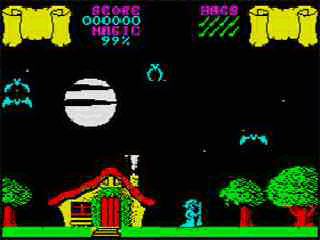
The keyboard deserves a separate description. A characteristic feature of the ZX Spectrum was the versatility of each key (with all keys in the standard version only 40). Each key had up to five values selected by one of the cursor modes. Such modes were: L - for entering lowercase letters; C - for entering capital letters; K - to enter the main BASIC keywords; E - for entering additional keywords and operators; And G - for input of pseudo-graphic, control characters and symbols defined by the user. The mode was displayed directly in the cursor's familiarity and was switched both automatically and using the Caps Shift and Symbol Shift control keys. For example, at the beginning of a set, BASIC waits for a command, so the cursor is in K mode. Pressing the "G" key in this mode will automatically enter the GO TO statement. After that, the cursor will go to the L mode and allow you to type a number, a variable name by letter or a mathematical expression (including E mode). The location of the language operators on the keys and cursor modes was thought out so that it was difficult to enter a syntactically incorrect expression. Despite the seeming complexity, with some skill to type programs it was possible very quickly. Later models (having 128 KB of memory and more) allowed, as an alternative, to dial the language commands in letters (only in the extended mode).
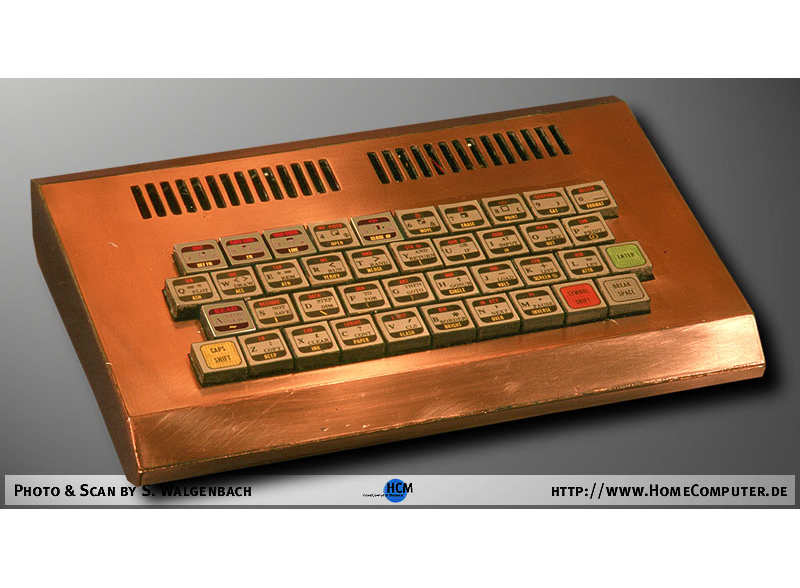
The assembly of unpretentious home (household) computers was done not only by former state enterprises in search of orders in new market conditions. Small specialized cooperatives, oriented specifically to these products, were also opened. There is no point in listing all the models and variants of the Spectrum. I will mention only the most common: "Delta", "Moscow", "Pentagon", "Dubna", "Profi", "Composite", "Scorpion", "Hobbit", "Nathan"
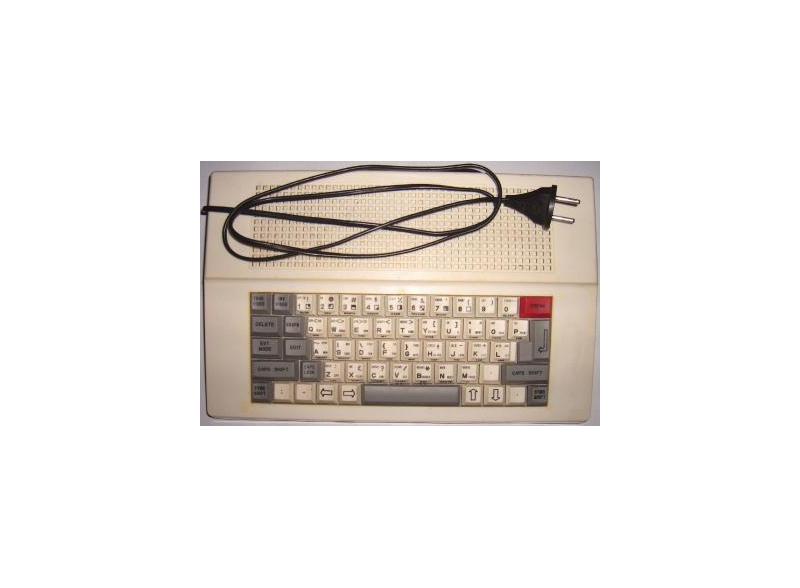
PC "DELTA" on the basis of ZX Spectrum



Comments
When commenting on, remember that the content and tone of your message can hurt the feelings of real people, show respect and tolerance to your interlocutors even if you do not share their opinion, your behavior in the conditions of freedom of expression and anonymity provided by the Internet, changes Not only virtual, but also the real world. All comments are hidden from the index, spam is controlled.